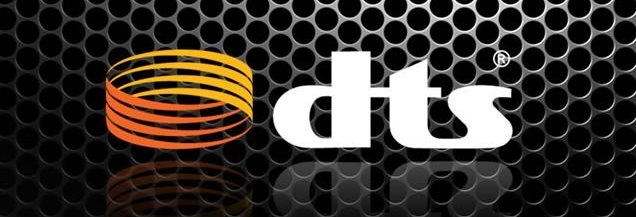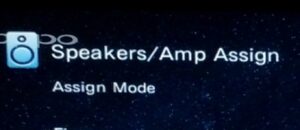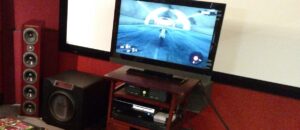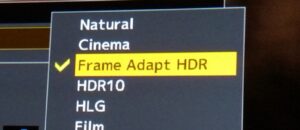After spending two days in San Francisco witnessing the latest products that Dolby Labs wanted to showcase, I next jetted off to the Los Angeles area to visit Dolby’s biggest competitor: DTS, Inc. I’ll be honest that I had no idea what to expect when I walked into the company’s headquarters in Calabasas. My arrival was not scheduled around a specific event or product introduction, but was rather more of a general meet-and-greet and facility tour. Nonetheless, the folks at DTS had some interesting stuff to show me, including one product prototype that really blew me away. I’m not kidding; when this thing is ready, it may be a game-changer in home theater audio. I’ve never experienced anything like it.
First things first, the day started with discussions of DTS’s new marketing campaign, called “Sound Matters.” In today’s market where compressed MP3s and Netflix streaming dominate, it’s more important than ever to educate consumers about the importance of audio quality to both the music-listening and movie-watching experience. This goes hand-in-hand with the company’s efforts to bring its codec to UltraViolet streaming and various mobile playback formats. I had a chance to listen to music and movie clips played from a tablet through headphones with virtual surround processing, as well as something called a post-processing “Boost” that improves the clarity of audio played through a phone speaker. (That one is designed for sharing content with a friend, not for listening through headphones.) These were interesting, but frankly, they’re just attempts to mitigate the awful sound quality of mobile and streaming audio. Home theater purists probably don’t have much patience for that sort of thing anyway.
Next, we moved to the building’s “Listening Room,” where I received a demo of DTS Neo:X processing, which is the company’s response to Dolby ProLogic IIz or Audyssey DSX surround modes, and will be available in June with the Onkyo TX-NR1009 A/V receiver. (No doubt, it will expand to more brands and models soon.) I watched a scene from the ‘Tron: Legacy‘ Blu-ray upmixed to 11.1 channels. In other words, that’s the 7.1 sound mix encoded on the disc plus two height channels above the front soundstage and two width channels on the sides. This was impressive, but then, I fully expected it to be impressive. The speakers in the room were clearly far more expensive than and superior to anything I own at home. The Neo:X processing added an effective sense of spaciousness and envelopment to the soundfield without being gimmicky or distracting. When the character in ‘Tron’ flung his light disk across the room, it smoothly panned through the side channels.
That was nice, but I don’t know if I’ll ever have call to use it at home. While I might be able to squeeze height channels into my room, physical constraints of my home theater layout prevent me from adding side speakers. I suspect that many of our readers will have the same issue.
Another interesting thing that’s currently in development is DTS’s own room correction and calibration software that can be integrated into A/V receivers. Of course, many A/V receivers today already have room correction and calibration software, either proprietary versions from the receiver manufacturers or brand-name products such as Audyssey MultEQ, which will automatically balance channel levels and add equalization to correct for room acoustics. The DTS version will go a step further by not only adding EQ, but correcting for wiring and speaker placement issues. For example, say that a home theater newbie has bought his first HTiB system, but wired his speakers with the wrong phase (getting the “+” and “-” wires backwards), connected the output for his center channel to a speaker in the back of the room, and put his surround speakers at different heights and distances from the listening position. The DTS software will detect and intelligently compensate for all of these problems by re-routing audio to the speaker nearest where it’s supposed to come from, switching phase on a per-channel basis, and adjusting levels and EQ.
Again, I have to emphasize that this room correction software is still in development. DTS has not yet announced a timeframe for release. But I think it’s a pretty neat idea.
So, with all that said, what really knocked my socks off? To set some context, the DTS reps played a discrete 11.1 file from their computer server through the speaker array in the room. This started with a simple voice calling out channel IDs, followed by a special demo clip. OK, so, big deal, right? Sure, it’s discrete, but was this any more impressive than the Neo:X processing? Not much.
Then things got really interesting. I was handed a pair of headphones and played the same clips. I was told afterwards that the headphones were a pair of $50 off-the-shelf Sennheisers, nothing special or unique about them.
I wrote two words in my notepad: “Holy Crap!”
How do I explain this? What I heard was virtually identical to what played through the speaker array a moment earlier. Until I physically took off the headphones, I would have sworn that the sound was not coming from the headphones at all, but must have been coming from the speakers in the room (and somehow getting through the headphones without muffling). The directionality and localization of sounds was astounding. When the voice called out speaker IDs, I head it coming from those speakers. Not just from the direction of the speakers, but from the precise distance and position of each speaker, with a full sense of sound radiating through the room from that spot – even from the surround, width and height channels. And the fidelity was sterling too.
I’ve heard headphones that try to simulate surround sound before (including some earlier in the day). But I’d never heard anything like this. This was a fully convincing home theater surround sound experience from a pair of headphones. It was amazing.
How does it work? I don’t know the specifics, but I can tell you the theory as it was explained to me. The prototype software is designed to model the room and exact seating position of the listener, calculate the speaker distances, and adaptively calibrate to emulate the existing speakers in the room. (It may even be possible to add head-tracking software so that you can change positions.) But what if you have crappy speakers and poor acoustics in your room? How’d you like to select a preset instead that will, for example, emulate DTS’s own Listening Room or a professional Hollywood mixing stage? That’s also possible.
The software can also be personalized upon initial set-up to the specific listener’s hearing. As you may be aware, people lose the ability to hear certain frequencies as they age. Someone who’s also attended too many loud rock concerts in his life may have hearing damage. After calibration tests (think of it like an eye doctor testing your vision – “Better, or worse?”), the software will adaptively compensate for that.
The demo that I received wasn’t even personalized for me. It was calibrated for one of the DTS reps, who was said to be a good model for average hearing. So, potentially, the demo I received could have been even better with some additional calibration.
Wow. Just wow.
Imagine being able to simulate the three-dimensional audio environment of a movie’s original mixing stage, calibrated to your specific hearing and seating position. And it’s through a pair of headphones, so your spouse or neighbors won’t complain about the volume. This could revolutionize home theater audio.
When will this be available? I don’t know. This was a prototype. DTS doesn’t even have a name for the product yet. It could be a ways out. But when it’s ready, if it could be integrated into an A/V receiver at some affordable price point… Well, sign me up. I would throw out all of my current speakers and audio gear for this. It’s that exciting.






Jason
I don’t know about getting rid of my home theater but that would be an awesome solution for a secondary setup. Say a bedroom where you don’t want speakers everywhere but still want a surround sound setup.
Chaz Dumbaugh
Dude thats crazy, I so look forward to more information on that, just think what that could do for people who love movies in apartment complexes, duplexes and the like, it would be even better if it ends up supporting multiple sets of headphones or something so a couple can watch in an apartment together without disturbing anyone around them AND get the full experience…..
Thats pretty huge stuff right there
Josh Zyber
AuthorI forgot to mention in the article that support for multiple viewers is also a goal for this.
William Henley
Man, I want those headphone things! When I bought my Home Theater, I was in a house with hardwood floors. I am now in a duplex with carpet everywhere! I need to get into the instruction manual to figure out how to recalibrate and probably adjust equlizers, because right now, the surround sounds terrible! But yeah, if I could ditch the speakers and get 11.1 out of a pair of $50 headphones, I am all in! I just hope I can get it in a $300ish reciever.
EM
I wonder if theaters would be better off handing out headphones à la 3D glasses (loss prevention might be a pain, though) instead of converting to Dolby Atmos. In any case, lots of interesting developments.
Aaron Peck
I would GLADLY hand over a couple extra dollars at the theater for a pair of headphones that would do this for me. If they can get sound like that out of headphones they should be marketing the crap out of them to movie theaters. Imagine a world where you didn’t have to listen to the mouth-breathing, popcorn-chomping, contentiously-talking moron sitting next to you.
This would be much more of an “experience” than 3D could ever hope to be and could bring more people back to movie theaters.
Holy crap, indeed!
JM
If only they could make the headphones selectively noise-cancel the stupid people, while letting the film fans enjoy the communal experience.
William Henley
My friends and I who go to the movies together all have different degrees of hearing loss. We thought the option was the subtitle glasses they are offering. However, custom calibrated headphones…. What would be cool is if they were like bluetooth compatable or something, so that you can store your settings on your phone or something, then you can have the same settings everytime you go to the movie, custom calibrated to your hearing. Yeah, I would pay for that!
EM
Yeah, I was thinking this tech, if used in theaters, might also allow multiple audio streams at a single showing. One possibility would be descriptions for the visually impaired. Another would be original language vs. dubs, which would mean theaters and distributors would not have to fret so much about whom to cater to.
Josh Zyber
AuthorTo be clear, this technology resides in a processor (currently a computer, but eventually in A/V gear), not in the headphones themselves. The headphones were an off-the-shelf pair with no modifications.
So, for your example, they’d have to incorporate the tech into the phone. Perhaps possible one day, but I’m sure it’s too computationally complex to do anytime soon.
Aaron Peck
It makes sense that they could create an app for it and then keep the tech on a server/computer somewhere else.